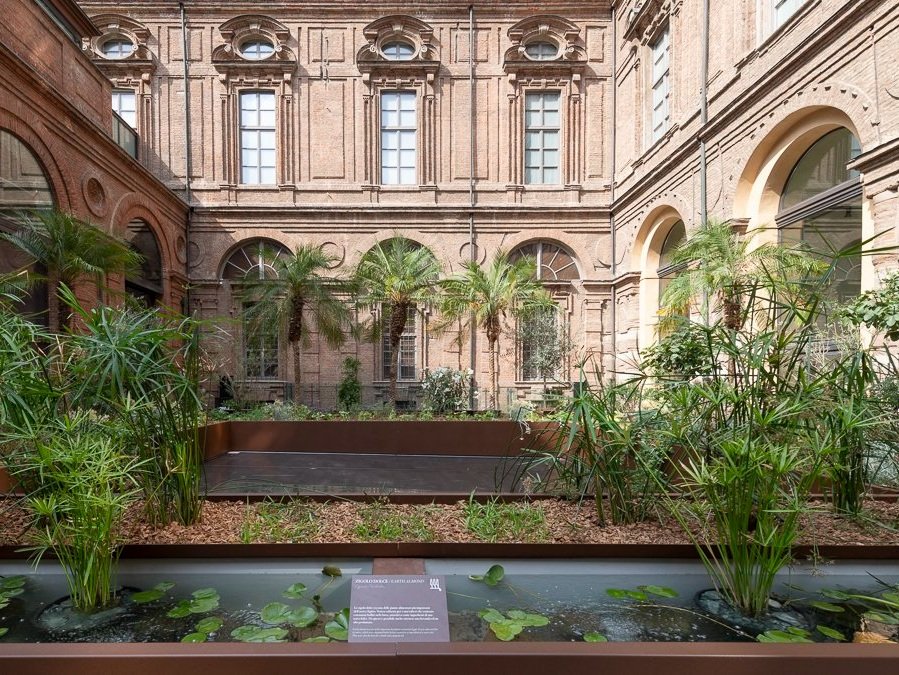The Museo Egizio new Egyptian garden
Nature, culture, and beauty merge in luscious Egyptian gardens, which are among the oldest evidence for the use of nature to create man-made places. Inspired by famous depictions of gardens found in the tombs of the Egyptian upper classes and supported by archaeobotanical research, Museo Egizio recreates a green space that can be freely enjoyed by the whole city and its visitors.
At the end of June, just in time to celebrate Summer, the Museo Egizio has installed an Egyptian garden in its inner courtyard. With its rectangular windows, the courtyard was indeed the perfect setting to recreate and bring to life a New Kingdom garden. Based on the representations found in New Kingdom private tombs, just to mention those of Nebamun or Rekhmire, such gardens were typically set around a rectangular water pond or water basin. More than just simple gardens made for food consumption, they were considered as ornamental gardens built in the courtyard of luxurious villas, essentially maintained for the pleasure of its wealthy owners whose main wish was to spend a happy day, as it is mentioned in the ancient Egyptian literature.
In order to obtain a result as close as possible from what these gardens might have been, we searched for species of trees and plants that existed in Egypt during this period and we have successfully managed to find them and install them in our own garden, taking into consideration that they would also survive the winter in Turin. Tamarisks, acacias, palm-trees, pomegranates, papyrus, lotus flowers, and many more species, can now be found in the courtyard of our museum. Beauty, scents, and shade, were then the main reasons of these natural arrangements and we do hope that visitors will be many to come and enjoy these same delights.
The experience of our Egyptian garden reaches its peak in the evening, when a projection illuminates the wall behind it. In order to fully immerge our visitors in this unique natural space, the projected images bring the garden to life by telling an ancient Egyptian story adapted from one of our New Kingdom papyri, a love-poem called “The songs from the Grove”. Love-inspired lyrics, intended to be sung and recited with musical accompaniment, were a new genre that developed mainly from the New Kingdom onwards. This song tells a story, in which a pomegranate, a fig tree and a sycamore take it in turns to extol their qualities or lament neglect. The pomegranate first tells of its fundamental role in hiding lovers “inebriated by wine and must”, while the sycamore invites its lady to a feast to be held in its shade with the other young people and servants. Finally, the fig tree, stripped of war from Syria, complains of being neglected by its lady and of not being watered, something however that will not happen in our garden!










